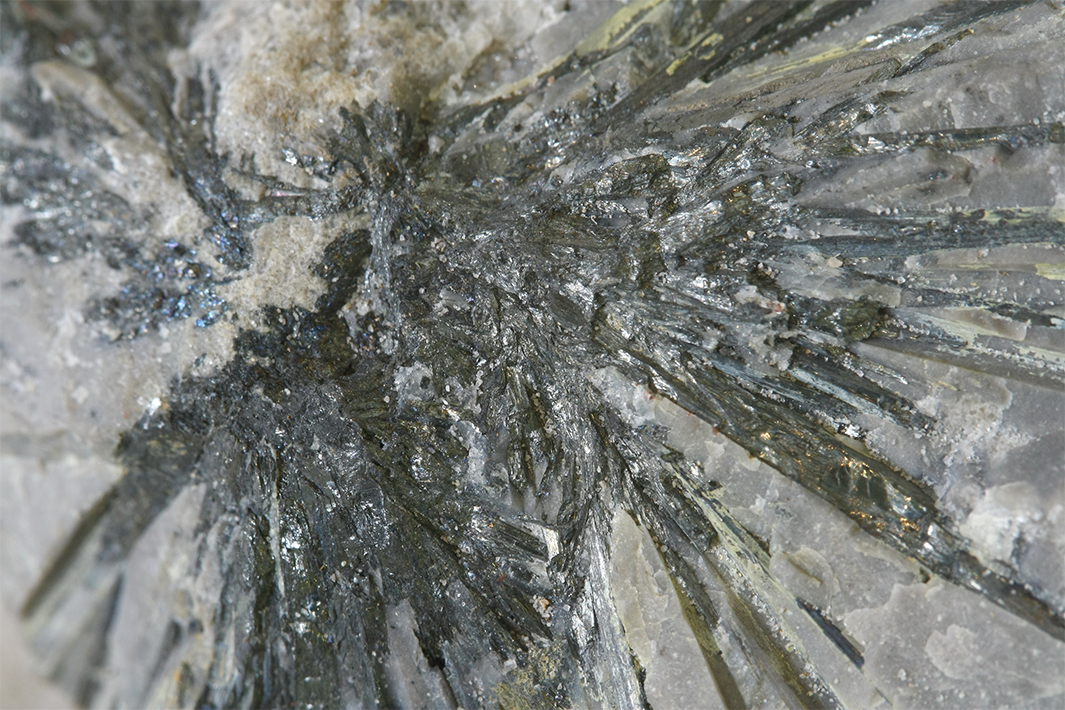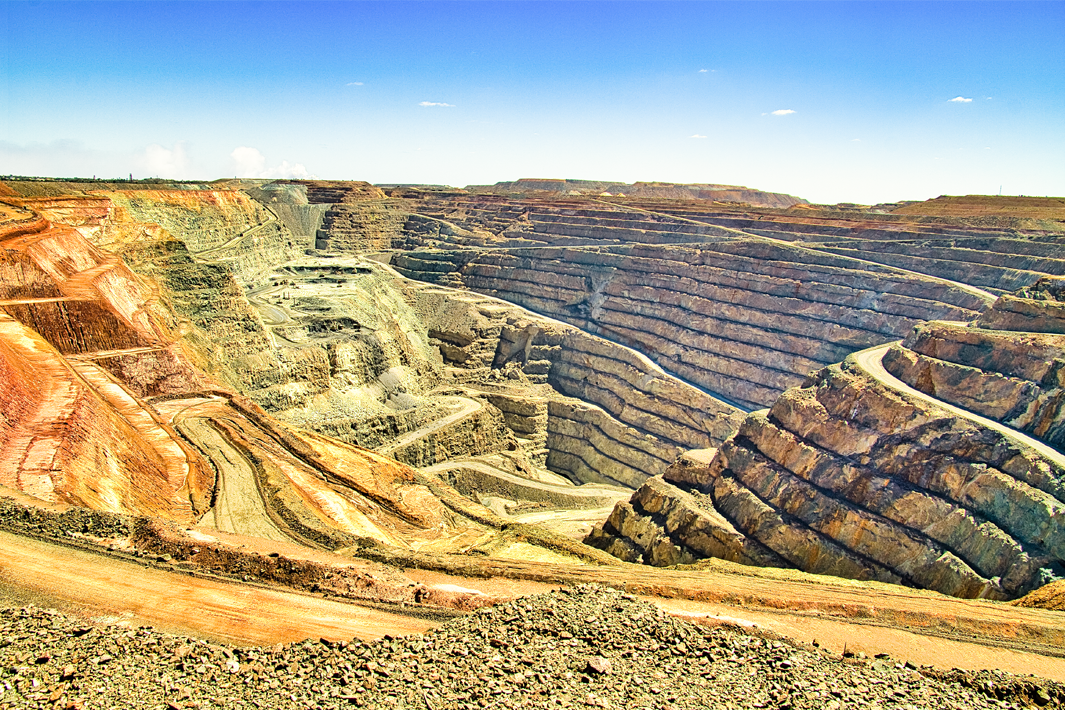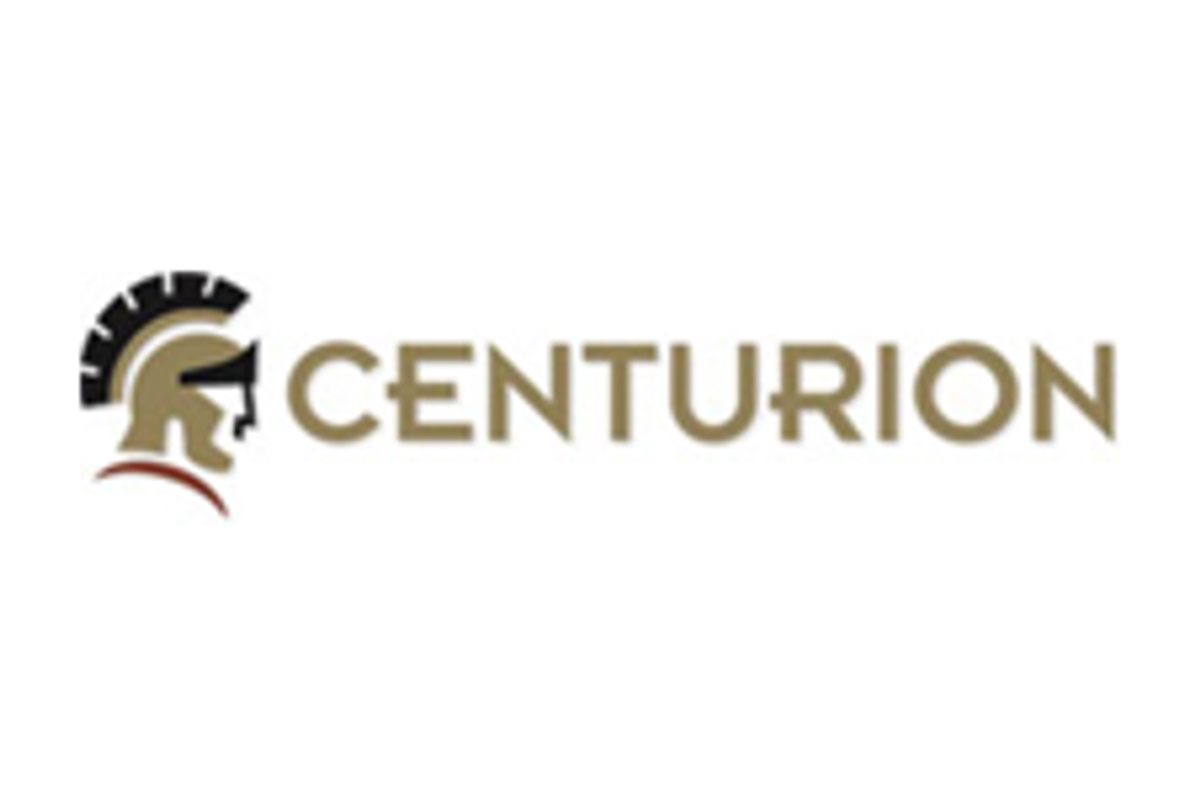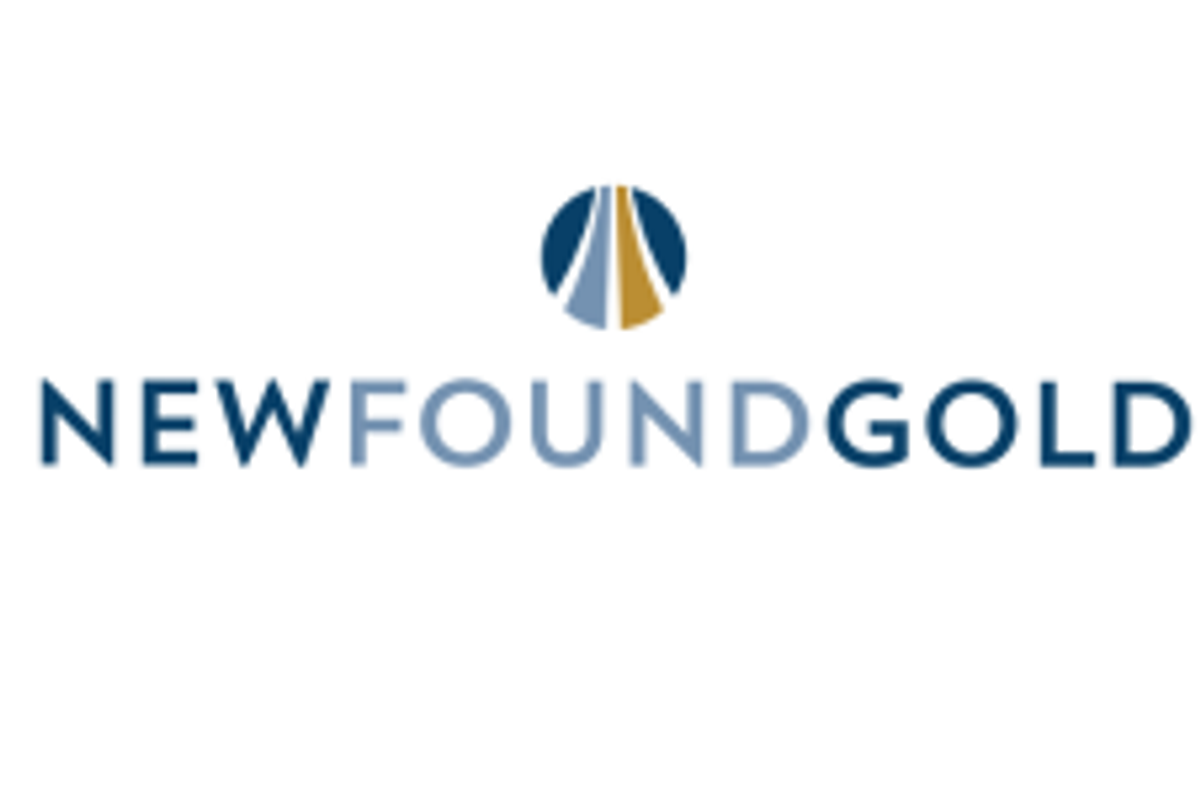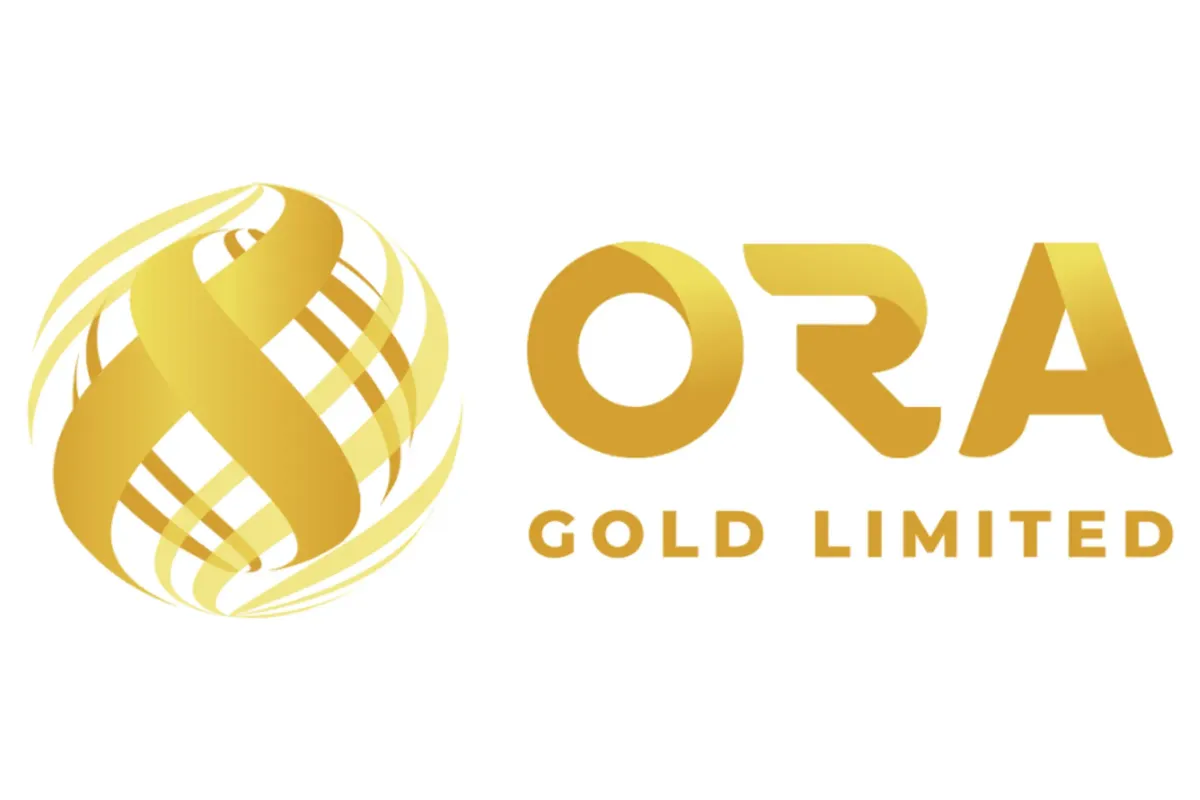
October 28, 2024
Ora Gold Limited (ASX: OAU, “Ora” or the “Company”) is pleased to report assay results from infill RC drilling at the Crown Prince Project (M51/886) part of Ora’s broader Garden Gully tenure (Figure 1).
Highlights
- Ora has received assays for a 7,500m, 66-hole infill RC drilling program at Crown Prince. This drilling was undertaken to better define mineralised lodes within the south eastern zone (SEZ) deposit to upgrade resource categories within a future conceptual open pit area.
- This drilling has returned some exceptional grades and intercepts including:
- 20m at 277g/t Au from 40m including 4m at 1,368g/t Au from 52m (OGGRC859)
- 15m at 14.7g/t Au from 152m (OGGRC872)
- 9m at 21.44g/t Au from 28m including 2m at 77.8g/t Au from 31m (OGGRC883)
- 7m at 11.74g/t Au from 132m (OGGRC874)
- 11m at 6.72g/t Au from 4m (OGGRC886)
- 12m at 6.05g/t Au from 76m including 4m at 10.2g/t Au from 80m (OGGRC895)
- 9m at 6.27g/ t Au from 66m including 1m at 18.6g/t Au from 66m (OGGRC888)
- 7m at 6.87g/ t Au from 133m (OGGRC864)
- New very high-grade zones have been encountered in the footwall of SEZ lodes which will likely improve grade and tonnage estimates in this area.
- This infill drilling has generally confirmed gold mineralisation modelling and has upgraded the quality in many areas.
Ora is continuing to progress Crown Prince towards development, targeting production commencement mid calendar year 2025. Among the several workstreams underway, including regulatory approvals, the Company has completed infill drilling ahead of releasing an ore reserve.
The program was designed to target zones of mineralisation within a conceptual pit design at Crown Prince that are currently in the inferred category of mineral resource (refer ASX release 20 February 2024). This drilling successfully confirmed mineralised zones and improved gold grades in some key areas.
Other improvements from this infill drilling include delineation of new near surface high grade zones and parallel lodes in new positions in the footwall and hanging wall of the south eastern zone (SEZ) mineralisation.
These zones are within the conceptual open pit for the Crown Prince deposit and are expected to add to the mineral resource and future mining inventory. Importantly, the grades returned in this infill drilling support existing published grades and may provide a foundation for an uplift in the average grade overall for the resource.
Assay results discussed in this announcement are shown in Appendix 1 & Figures 2-5. RC hole details are included in Table 1.
Alex Passmore Ora Gold’s CEO commented:
“We are very pleased to report these exceptionally high-grade results returned from recent infill drilling. The infill drilling was carried out successfully and has confirmed or improved the mineralisation model we have for Crown Prince.
Such high-grade headline results demonstrate the high quality nature of the Crown Prince Project and point to its likely strong economics during development and production.
We look forward to providing further information on the updated resource estimate in coming weeks and then to follow up with an ore reserve as work progresses.”
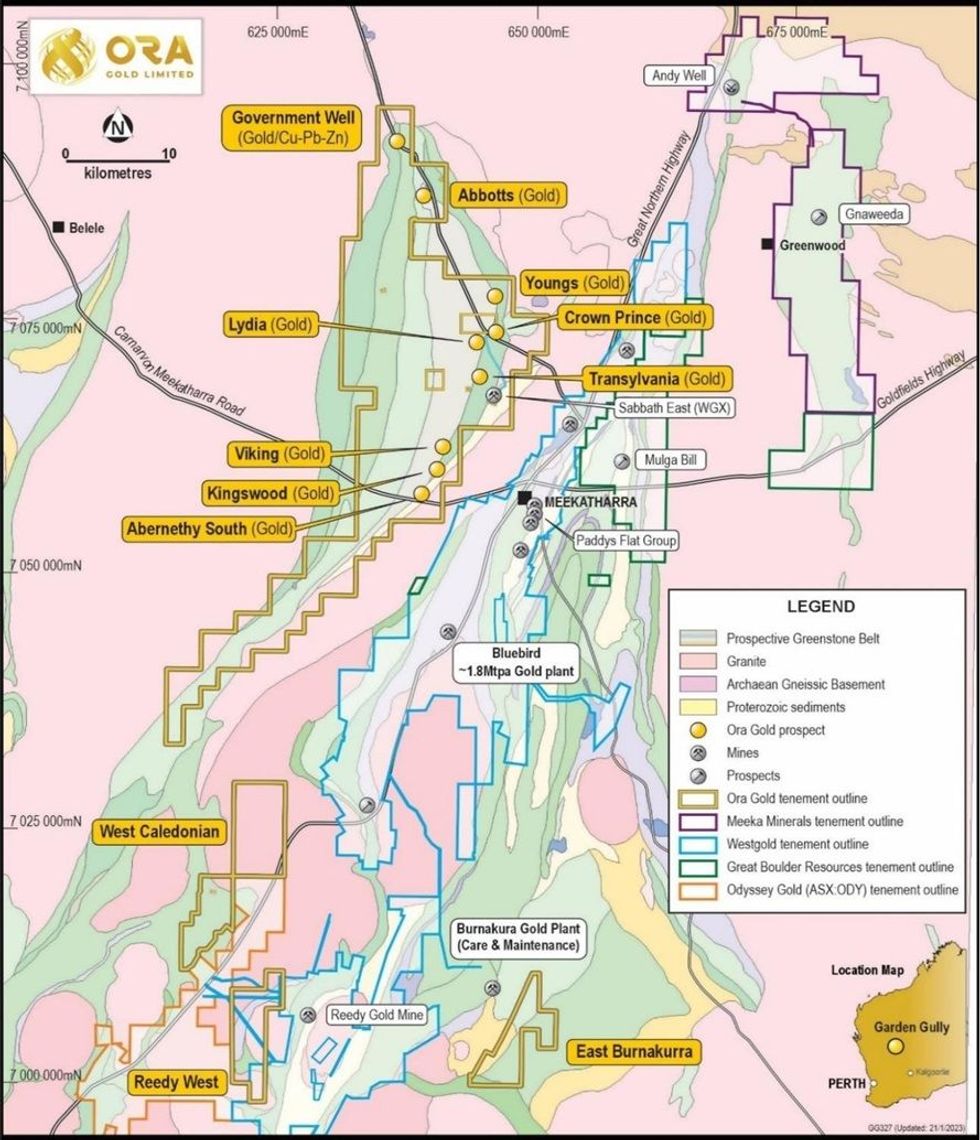
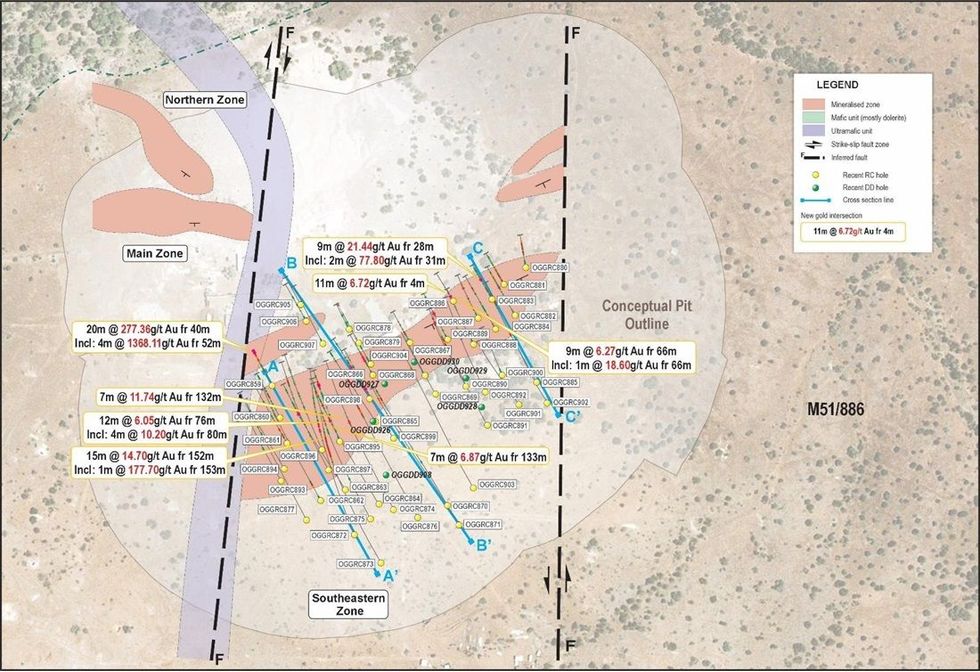
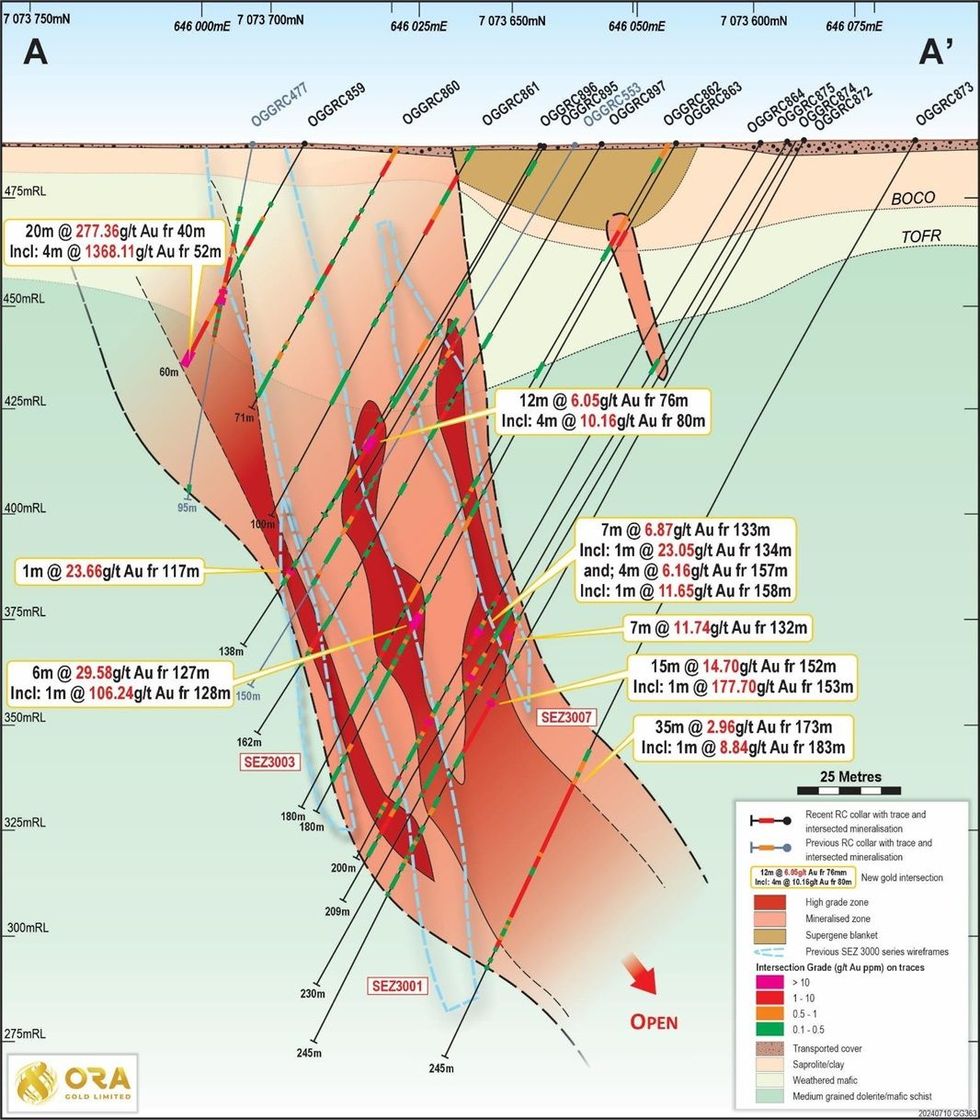
Cross Section A-A’
Infill drilling at SEZ has confirmed new FW and HW lodes outside the current mineralisation wireframes, with outstanding high-grade intercepts Including: 20m @ 277.36g/t Au from 40m (incl: 4m @1368.11 g/t Au from 52m) in OGGRC859 and 35m @ 2.96 g/t Au from 173m In OGGRC873.
Extensions to the current mineralisation model along section A-A have been confirmed by intercepts in OGGRC862, 875 and 872 which include 7m @ 6.87 g/t Au from 133m in OGGRC864 and 15m @ 14.7 g/t Au from 152m (incl: 1m @ 177 Au from 153m).
New high-grade intercepts in OGGRC859, along with previous intercepts in OGGRC477 have highlighted additional mineralised zones close to surface in the footwall, which fall outside existing mineralisation wireframes.
OGGRC873 has strengthened the current interpretation that the high-grade shoots at the southwestern end remain wide and continuous at depth.
The SEZ host geology consists of a series of coarse-grained amphibole dolerites and minor high Mg basalts which grade into an intensely sheared unit proximal to mineralisation. Gold is associated with classic, extensional mesothermal style quartz lodes with characteristic Fe carbonate +/- fuchsite alteration, with high grade zones occurring with sulphide laminations and microstructures that crosscut the early-stage white buck veins.
Recent infill drilling has confirmed that the mineralisation system remains high grade down dip, highlighting potential for future underground mining.
Click here for the full ASX Release
This article includes content from Ora Gold, licensed for the purpose of publishing on Investing News Australia. This article does not constitute financial product advice. It is your responsibility to perform proper due diligence before acting upon any information provided here. Please refer to our full disclaimer here.
OAU:AU
The Conversation (0)
31 December 2025
Utah’s Antimony Resource: A Strategic Investment Play in Critical Minerals
Utah may be best known for its copper and gold legacy, but hidden beneath its rugged terrain lies one of the most overlooked critical mineral opportunities in the US: antimony. With global supply heavily concentrated in China and export restrictions tightening, Utah’s underexplored antimony... Keep Reading...
30 December 2025
Hidden Gem: How Intrusion-related Gold Deposits Could Fuel Next-generation Discoveries
With the gold price continuing to hover near all-time highs and major producers scouring the globe for new large-scale deposits, one type of gold system is emerging as a potential game changer. Intrusion-related gold systems (IRGS) have already yielded multimillion-ounce mines, like Kinross... Keep Reading...
30 December 2025
Finding Gold: Exploring New Zealand’s Next Big Discovery
Despite its rich mining legacy, New Zealand remains one of the most underexplored frontiers for gold in the developed world. Now, with advanced exploration tools and a new generation of explorers, the country is emerging as a hotbed of untapped investment opportunity.Modern exploration... Keep Reading...
Latest News
Interactive Chart
Latest Press Releases
Rio Silver Inc. Completes Securities for Debt Transaction
31 December 2025
Prismo Metals Announces Closing of Private Placement
31 December 2025
Related News
TOP STOCKS
American Battery4.030.24
Aion Therapeutic0.10-0.01
Cybin Corp2.140.00
